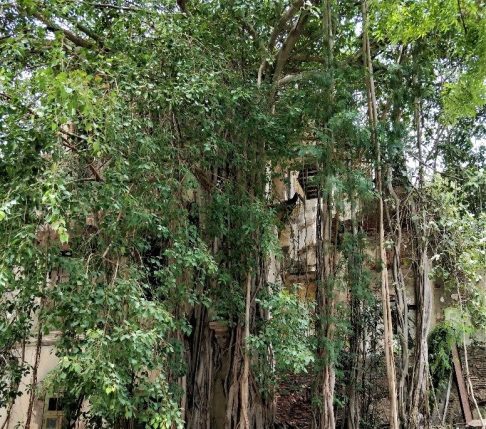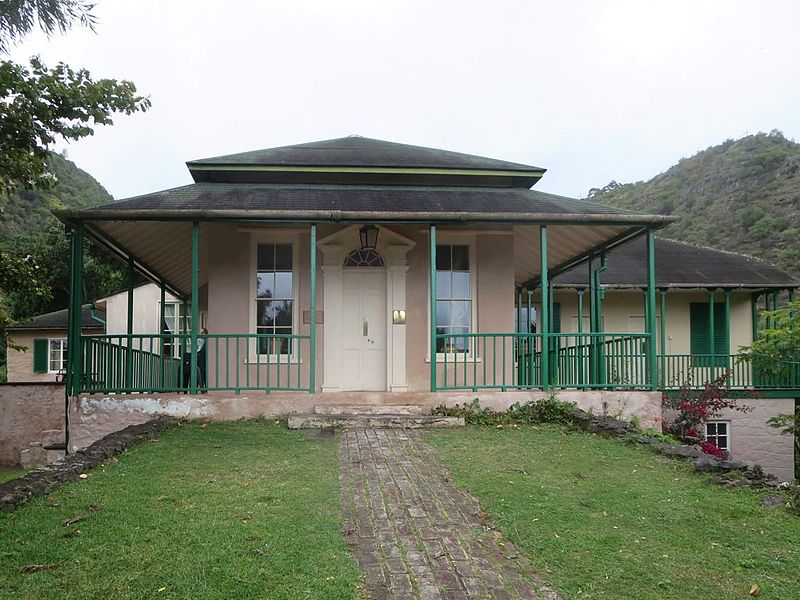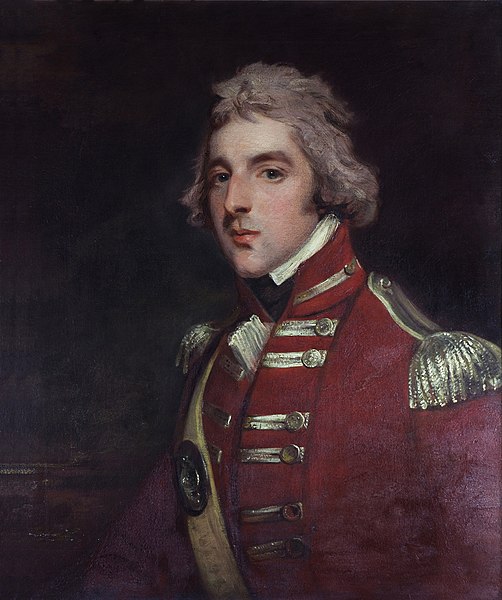Even a schoolboy knows that Napoleon was defeated at Waterloo by the Duke of Wellington. But how many of us know that Wellington spent his youth at Fort St. George, Madras (modern Chennai)?

If you walk down the Charles & James Street at the Fort, you would find a ruined mansion at the corner. The only thing that keeps the mansion from going to pieces is a great banyan tree that has lovingly embraced it and is holding it together. THAT was the house where he lived in the late 1790s. He was not THE famous Wellington then. He was just young Colonel Arthur Wellesley, trying to make a mark in the world.
It was in India that he honed his military skills. He participated with distinction in the Anglo-Mysore Wars and the Anglo-Maratha wars. He gained a reputation for emerging victorious out of desperate situations where the enemy had numerical superiority, AND with minimal losses. By the end of his tenure in India he had become a Major-General and had been knighted. After years of tough military campaigns, he deserved a rest. On his way back to England in 1805, he stopped for a brief vacation at St. Helena, off the West African coast. There, he stayed at the Briars cottage belonging to a friendly British merchant named William Balcombe. This cottage, as we shall soon see, was to become famous in history.
Years passed. Wellington’s army was now busy fighting Napoleon Bonaparte’s French armies all over Europe. Napoleon derogatorily called Wellington the “Sepoy* General” — an insult to his military service in India, meant to contemptuously dismiss him as an unworthy opponent. The French press gleefully published it. But that glee was short-lived.


In 1815, the British and Allied forces under Wellington’s command decisively defeated Napoleon’s army at Waterloo. Wellington victoriously marched to Paris and commandeered the Elysee Bourbon, which was the official palace of Emperor Napoleon Bonaparte. Napoleon was exiled to St. Helena and placed under house-arrest in Briar’s Cottage, which belonged to the Balcombes: the very place where Wellington had enjoyed a pleasant holiday some years back. The irony was not lost on Wellington. He wrote a letter to the British commander at St. Helena, “You may tell Bony ( a dismissive way of addressing Bonaparte) that I find his apartments at the Elysee-Bourbon very convenient and that I hope he likes mine at the Balcombes.” THE SEPOY FROM FORT ST. GEORGE HAD THE LAST LAUGH!
For more stories like this join us on one of trails in Chennai. Discover more about Colonial Madras on the British Blueprints trail.
*Note: Sepoy is derived from the Urdu word Sipahi, meaning soldier. The word is usually used to denote soldiers of the Indian Army.
Archives
- January 2022
- December 2021
- November 2021
- August 2021
- March 2021
- February 2021
- January 2021
- December 2020
- November 2020
- October 2020
- September 2020
- August 2020
- April 2020
- March 2020
- February 2020
- January 2020
- November 2019
- October 2019
- September 2019
- August 2019
- July 2019
- June 2019
- August 2017
- February 2017
- January 2017
- October 2013
Featured Posts
- Tales that pots tell: Keeladi excavations AUGUST 18, 2021
- The Last Grand Nawab: Wallajah FEBRUARY 10, 2021
- How Tej Singh became Raja Desingu of Gingee FEBRUARY 5, 2021
- How Shahjahan seized the Mughal throne JANUARY 28, 2021
- Alai Darwaza – Qutub Minar Complex, Delhi NOVEMBER 21, 2020
- Marking History through British buildings NOVEMBER 17, 2020
- The last great queen of Travancore NOVEMBER 7, 2020
- Brahmi and the evolution of scripts OCTOBER 15, 2020
- The Cambodian King of Kanchipuram OCTOBER 14, 2020
- James Prinsep – the man who read the writing on the wall OCTOBER 10, 2020
- Mariamman – the Village Goddess who travelled SEPTEMBER 30, 2020
- Misnamed Monuments of Mamallapuram SEPTEMBER 28, 2020








